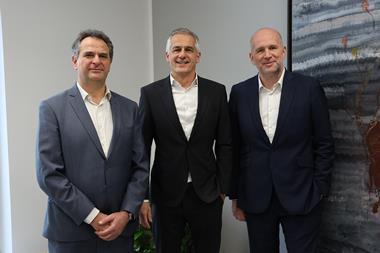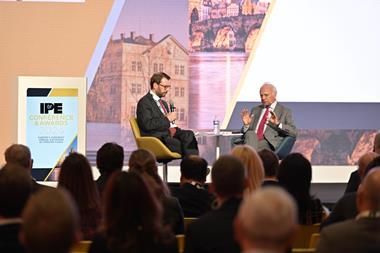“Global private equity is moving to the situation of being one-third US, one-third Europe and one-third Asia,” declares Tycho Sneyers at fund of funds provider LGT Capital Partners. “Half the Asian opportunity will be in China, whilst 25% will be in India and the rest spread throughout the region.” LGT has expanded its exposure significantly over the past three years to around 20% of global portfolios. “There was no crisis and little impact on the portfolios or fundraising.”
Private equity in emerging markets is essentially growth equity, not leveraged buy-outs. As Simon Faure, a director of Prudential Portfolio Management’s private equity fund of funds activities, says, there is nothing wrong with leveraged buyouts, per se. “But growth is a constant and stable way of making money and some business can grow in both good times and bad,” he notes. “The biggest problem with no leverage is that unless growth rates are very high, you cannot make exits at three-times the purchase price - the sort of return that justifies the risks.”
However, the challenge that private equity investors in Asia face is, first of all, identifying management teams with expertise in each sector and, secondly, selecting those who have the genuine ability to assist company management in executing growth. There is little evidence yet as to whether the immense flows we have seen has been smart money or dumb.
As Faure points out, there has been no proof of concept that private equity actually works in markets like Asia, and even if it does, many managers come from an investment banking or consultancy background with little direct private equity experience. “It takes time to learn about doing private equity investment and ideally managers need to have done an apprenticeship that has taken them through the highs and lows of the business cycle,” he says.
There can also be challenges in finding a rationale for private equity in Asia. India, for example, has very developed capital markets and an extreme concentration of wealth among a relatively few families, not dissimilar to Italy or Brazil. “Is private equity the ‘dumb money’ that chases deals that no one else would touch?” asks Faure.
Faure’s worries about ‘dumb money’ are most severe when it comes to China and India, which have attracted the bulk of interest and investment. Is there really the capacity and talent to justify the growth we have seen in just a few years - from 30 to more than 350 private equity firms in India alone since 2004? Hans Markvoort, LGT’s head of private equity investment solutions, argues for his firm’s tilt towards China rather than India because private equity fills a capital-allocation niche in the absence of a well-developed banking sector.
Larry Unrein, head of private equity at JP Morgan Asset Management says that JP Morgan takes a similar view: valuations are more attractive but he also sees a better culture and government support for private equity there. It also helps that China also has a robust exit market: “If you look at the global statistics for IPOs during the last two or three years, it has been dominated by China” he says.
India
India’s growth rate and sheer size makes it comparable to China in terms of potential for private equity, but investors have to be wary of who they place their money with. “A lot happened in 2007,” says Nitin Deshmukh, CEO at Kotak Private Equity. “Sixteen of the top 20 global private equity firms established offices in India. Around $1bn was invested in 2004, while in 2007, the figure was over $14bn. These new players did not do much in 2009, but they came back into action in a hurry in 2010, undertaking transactions at high prices and driving up valuations significantly.”
In China, unlisted companies usually trade at a discount to listed companies, providing an incentive for flotations. But as Deshmukh points out, unlisted companies in India have been traded at valuations even higher than listed companies because the market is highly intermediated, as new players pay high valuations to source dealflow and demonstrate deals. This fits with what Sneyers sees from the perspective of LGT, which has invested in a handful of managers in India compared with about 15 in China: “It is a much smaller market with more competition, more players, high valuations, very few exits and somewhat disappointing returns.”
Still, alongside the multinational megafunds and second-tier global firms, a number of independent firms have also set up - some, like ChrysCapital, with long track records - and, perhaps most significantly, there are also subsidiaries of major financial and industrial groups such as Tata Capital, Kotak Private Equity, ICICI Venture and IDFC Private Equity.
In developed markets, investors have been wary of these so-called ‘captive firms’ for fear that third-party investment flows might be used to support parent company investment strategy, to the detriment of investors. But in the context of a market like India, there can be considerable advantages to having access to high quality dealflow without being subjected to an auction process. For example, when Kotak identified aerospace and defence as the next big opportunity, it partnered with Mahindra & Mahindra to make a major investment in Mahindra Aerospace that enabled two acquisitions - a niche aircraft manufacturer and an Australian aerospace components and assemblies manufacturer.
“We were able to add considerable value to the transaction partnering with the Mahindra team in negotiations, structuring the transactions, legal agreements, and so on, besides working on the strategic plan ahead to scale up the business in India,” explains Deshmukh. “We see a significant amount of dealflow from Kotak and we have benefitted from that. There is also a lot of credibility associated with Kotak which is a strong brand in the capital markets: mid-sized enterprises benefit from the association.”
Amit Dev Mehta, who heads Tata Capital in Europe, agrees. As a group with a 140-year history and a leading brand in India and, increasingly, across the world, Tata is well positioned to find attractive deals. It currently runs five private equity funds, all with a target size of $1bn: a special situations fund; an ‘Innovations’ fund; a healthcare fund undertaken in conjunction with healthcare specialist HBP Partners; a growth capital fund; and, lastly and most significantly, the Tata Opportunities Fund, investing in opportunities arising from within the Tata Group and outside.
During the past decade, Tata has invested $40bn and expects to invest a significant amount over the next decade, so it is no surprise to find it looking to diversify targets of funding to include an element of private equity.
Indian private equity may not match China in size, but many of India’s industrial groups have long and distinguished histories that enable them to source deals and add value through their own expertise. The key issue for private equity investors may be establishing the governance structures to enable them to be in a fair partnership; otherwise they may find themselves paying a premium for deal flow through independent groups.












No comments yet